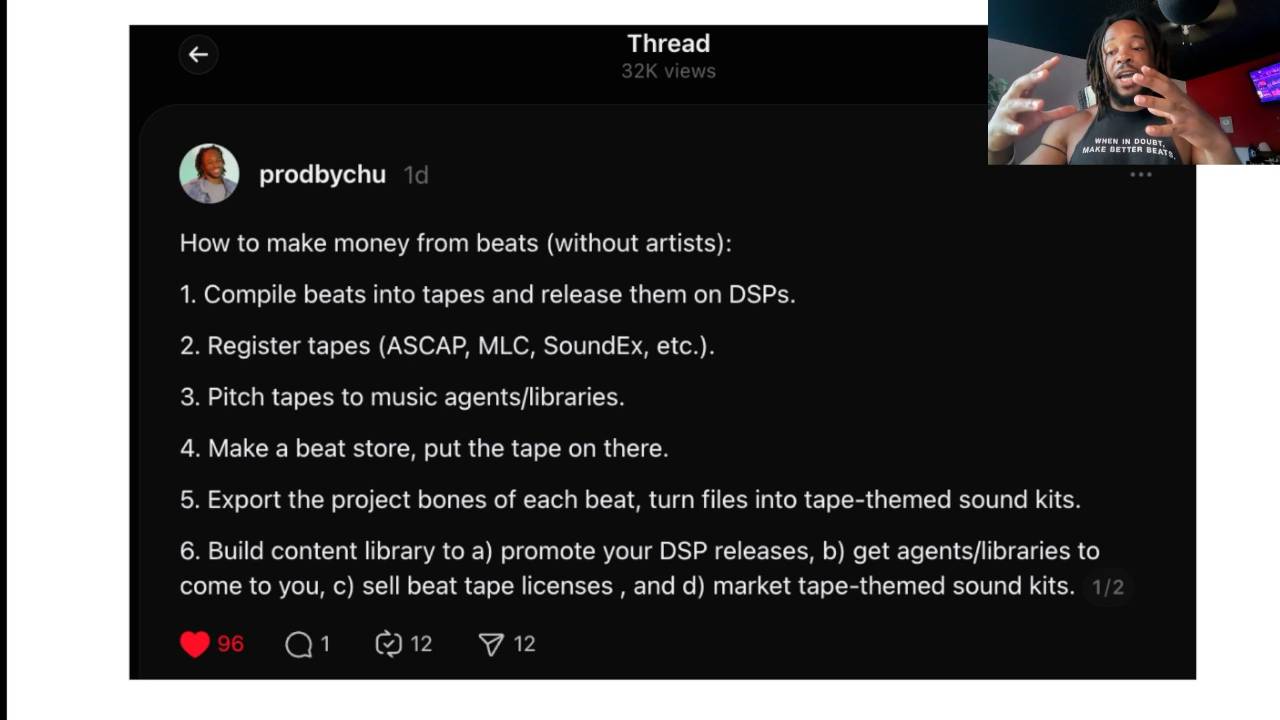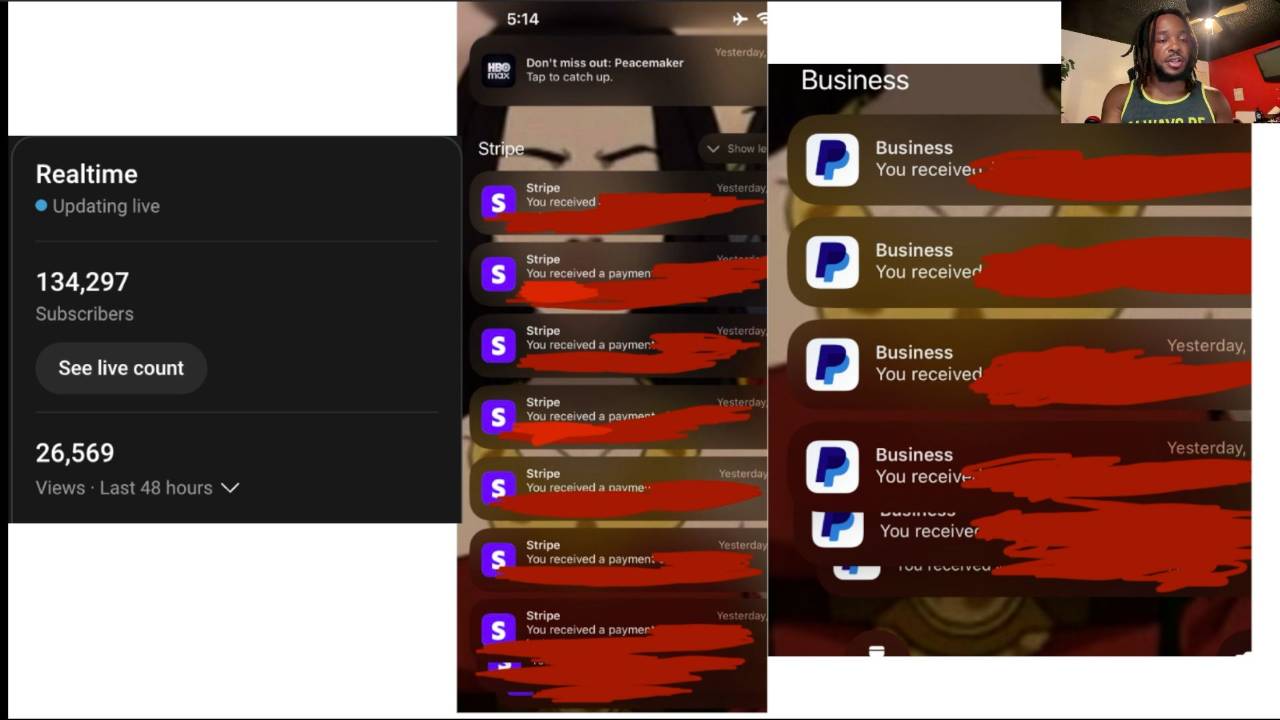
How I Build My Following On Spotify With Distrokid (Make Money Streaming Music On DSPs)
Sep 18, 2023Independent music grows 97.6% in less than a decade.
[This letter is sponsored by Distrokid. So any time you see the word "Distrokid" hyperlinked, just know that it's a link to a sponsored page for a discount on their service. However, the information with this post will work with ANY DISTRIBUTOR (and the concepts presented work for music promotion in general). Disclaimers aside, Distrokid has been my distributor since 2017, long before they offered me anything (2020), and I still use them despite having the option to go though Sony now (2023) - go here to get 7% off your annual subscription]
Independent music acts were earning $256.7 million per year in 2015 (MIDiA Research).
They earned 10.8 billion in 2022 (MIDiA Research).
That’s an increase of 97.6% in the last 8 years.
Are you getting a piece of that pie?
Many things can help you get a slice.
-
Information is more accessible (“YouTube university”, affordable courses from experts).
-
Digital Audio Workstations (DAWs) and affordable recording equipment make it easier to create music at home.
-
Performance Rights Organizations (PROs) help you secure royalties for your syncs and placements.
But nothing has changed the game more than the democratization of distribution.
Record label deals used to be the only way you could get your music on major distribution platforms.
Today, boutique distributors (like Distrokid) put to power to reach the world with your music at your fingertips.
The birth of music.
The commentary “music is dying” echos from a generation that had a limited amount of music available.
There’s more music than ever before right now.
Distrokid ingests and processes over 40,000 songs every day (and accounts for over 40% of music distribution in the world).
Everyone shares their art now.
So, I would not say “music is dying” - it’s more alive than it’s ever been in history.
The more accurate statement is this:
“Music was dead.”
We are now witnessing the true birth of music.
Music creation used to be limited to a select class (usually the most privileged).
2 decades ago, it was impossible to create and record your music without paying well over $10,000.
Now you can launch an entire independent label from your bedroom for less than the cost of a PlayStation.
You can learn any musical skill. YouTube can teach you a lot for free (especially with the rise of super long-form content).
And online courses from reputable experts are less than 1% the cost of learning the same music skill from university or private tutors.
Digital audio workstations (DAWs) give you a full studio anywhere you have a laptop. And home recording equipment is powerful yet affordable.
You no longer need to spend $100+/hour in the studio making your beats and tracking your vocals.
Boutique distributors (like Distrokid) let you post your music directly to digital service providers (DSPs). We now have instant access to the global market, which is something that used to only be accessible to those with record deals from major labels.
Become a part of history.
This is the first time in history that we’re hearing what every creative has to say.
A bigger chunk of humanity is contributing to the overall art (for the better, in my opinion).
The gatekeepers aren’t entirely gone. But they have less sway. And they’re giving in to what we want.
As Gary Keller says in ‘The One Thing’:
“We live in an amazing time. The ivory towers, which once courted the esteemed grantors of permission, are crumbling. If you have the talent and the desire, approval is no longer needed. Permission, not required. The keys to the dream palace await in open pastures: YouTube, Instagram, Amazon, and any other medium with an audience.”
We are in the middle of a chapter change in the book of musical history.
In the last chapter, we only read what happened as it occurred.
We are the authors of this new chapter.
You can start writing a part of the story.
And it begins by releasing your music to the world.
I’m writing my story by releasing my music using the DK Dynasty Method.
Begin your musical legacy with Distrokid.
I affectionately refer to my release strategy as the DK Dynasty Method (DK = Distrokid).
Here it is:
-
Content first.
-
Finalize the song.
-
Release with Distrokid.
-
Post promotion.
-
3-pronged re-promo strategy (content, remixes, album).
Let’s break it down.
#1 - Content first.
I don’t just randomly release tracks anymore.
I’ve shifted my focus to making content about my music consistently.
How the content performs tells me if I should release the song.
If the content has low or average engagement, I move on to the next idea/track.
But if the content over performs, it’s a sign that my audiences on streaming platforms will enjoy having that track available.
#2 - Finalize the song.
The audience chooses what songs I release by engaging with content.
When I get significantly higher than average views/likes by just posting the track snippet as a content piece, it tells me I’m on to something good.
Sometimes people even comment “I would love to listen to this on Spotify” (dead give away for me to release the track).
Based on the good feedback for a particular content piece, I finish the track and export it.
I make cover art using Canva and Photoshop.
Then I schedule it for release on Distrokid.
#3 - Release with Distrokid.
It’s easy to release music with Distrokid.
You just upload your track and cover art, set the metadata, and schedule the release.
I take less than 5 minutes most of the time (full albums take slightly longer).
I like Distrokid because they have a lot of systems built in to make sure you don’t mess up your upload.
And even when you do mess up, they have a responsive support team that can fix most problems (they’ve helped me with so much).
#4 - Post promotion.
I don’t believe in pre-promo.
It’s a waste of time for me.
In my experience, it doesn’t help and isn’t nearly as effective as just promoting the song once it’s actually out.
I also don’t think pre-save matters at all.
All I’m focused on is getting the links (mostly for Spotify) in front of my audience once the song drops.
I want them to save the track on Spotify because it’s the best way to make sure they’ll see your next release. It also pushes your other releases to them, increasing your odds of turning them into bigger fans.
Important note: My mentor told me about the power of getting your fans to save your tracks in their library. It’s the single most helpful piece of Spotify marketing advice I’ve gotten (so I had to share that with you).
I use my email list (13,000+ as of writing this) and Instagram (16,000+ as of writing this) for my post promotion.
For my list, I create an engaging blast about the track and ask people to check out the track (hyperlinked in the blast). I clearly tell them to save the track to their library because that’s the only way Spotify knows if they support me (transparency is a good marketing approach).
I also use this email blast as a blog post about my release on my website, which further boosts the SEO of my track.
On Instagram, I create a story post with the cover art and link to the track and then use the track and background music. Simple, yet effective in my experience.
#5 - 3-pronged re-promo strategy (content, remixes, album).
This is a derivative of post promotion.
I increase the visibility of the song in 3 ways:
-
More content.
-
Remixes.
-
Compiling it with other songs into an album.
I wouldn’t get this far unless I already knew the content concerning the song did well.
I want to make even more content about the track:
-
Breakdowns.
-
Stories.
-
Mini-documentaries.
The goal is using my creativity to make content that increases the visibility of the track. The more visible it is, the more engagement the actual song gets.
Remixing is a good way to re-promote the track on DSPs (you can get more content out of this too).
Here are a few ways that I create remixes for my tracks that get the most engagement:
-
Slowed + reverbed version.
-
Chopped a screwed version.
-
Sped up version.
-
Getting an artist on the track.
I release the remix in a 2 pack single with the original. Distrokid allows you to reuse the metadata from the original to create a new multi song single (a single can have up to 3 songs before it’s considered an EP or album).
Album re-promo works similarly to remixing.
I take the track and compile it with other songs that have performed well over time (I might add a few unreleased tracks too).
Then I drop this as a full body of work (which I can promote with more new content).
This plan works perfectly with Distrokid as your distributor.
They’re the brand I trust (I’ve been with them for 5 years).
Go here if you want 7% off your annual subscription.
Become a part of history using Distrokid and the DK Dynasty Method.
Blessings ❤️🔥 - Darth Chu
Get Sound Kits 👇





